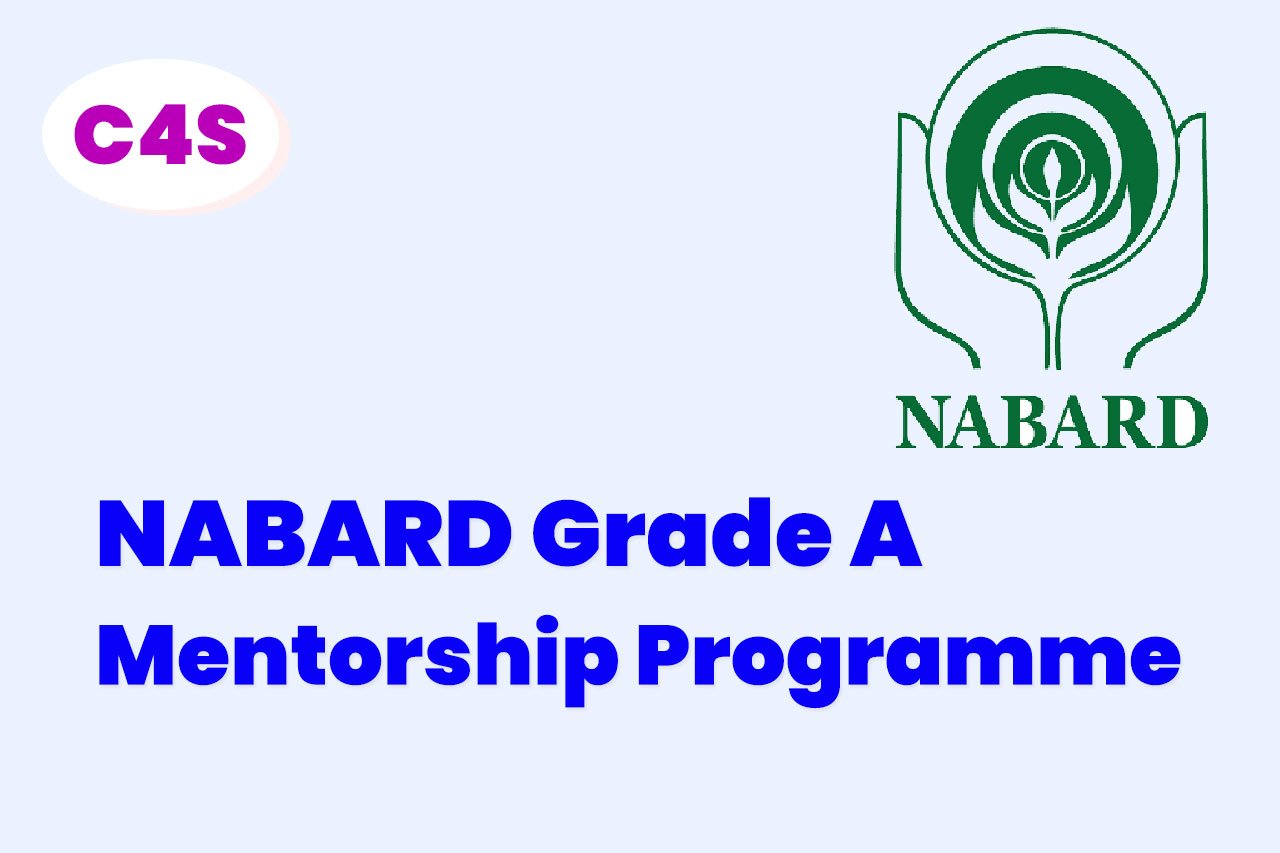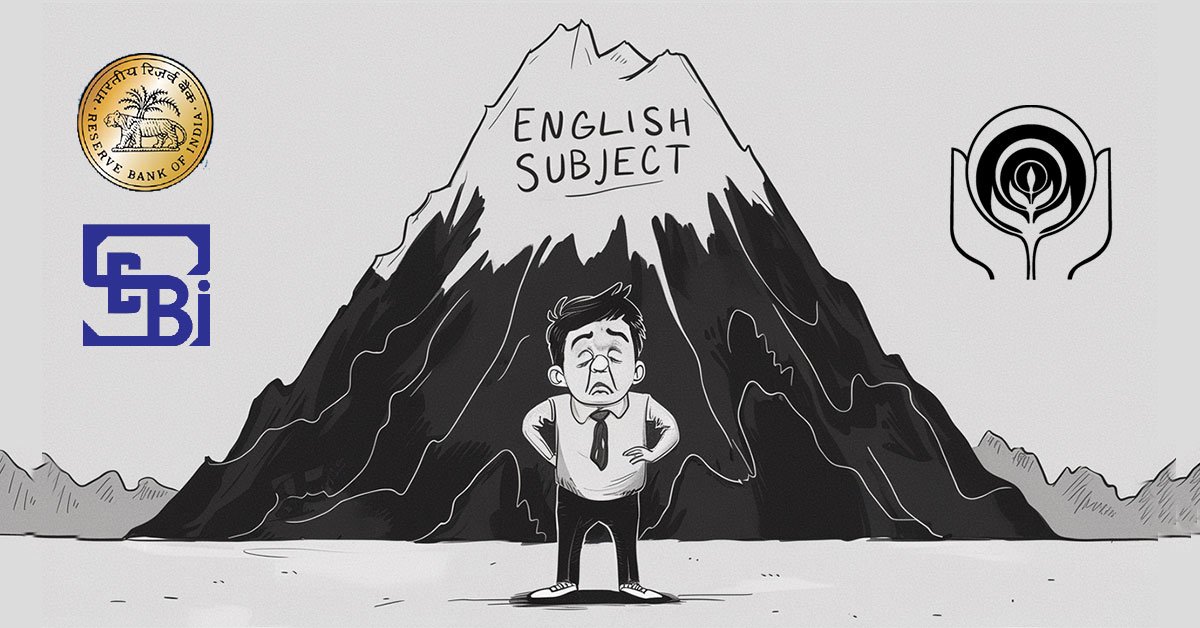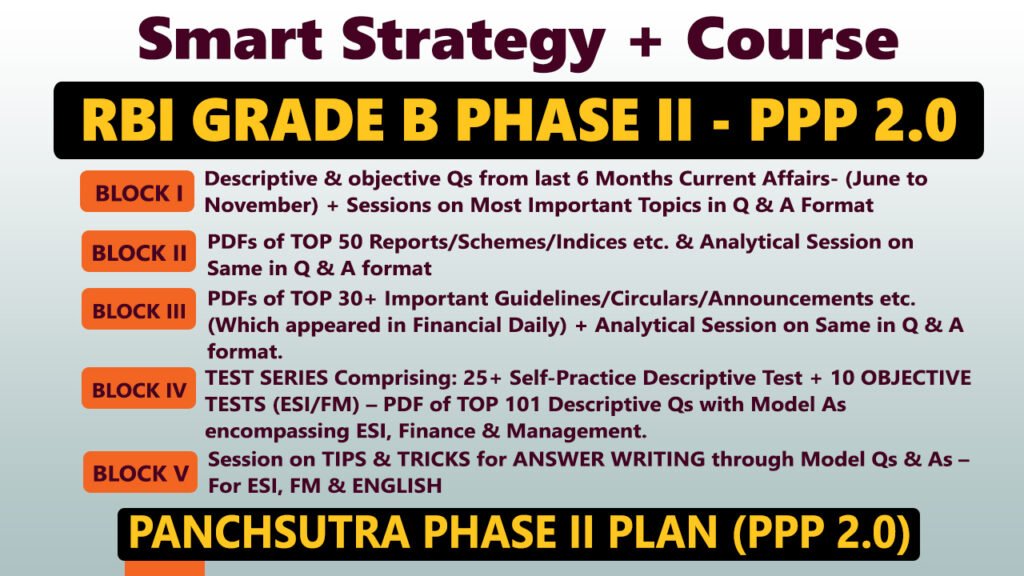Daily Current Affairs Quiz
18 January, 2025
International Affairs
1. Indian Ocean Region
Context:
Threats in the Gulf of Aden, Red Sea and in waters adjacent to the East African countries might increase and the Indian Navy is striving to boost its presence and keep the sea routes safe, Defence Minister Rajnath Singh said.

Indian Ocean Region
The Indian Ocean region is a sea route that connects Africa, Asia, and Australia. It is a region that has quite significant economic and strategic value; most countries rely on this region for trade, resources, and security.
What’s in the Indian Ocean region?
- Countries
- The Indian Ocean region is covered by countries such as India, Pakistan, Iran, Bangladesh, Australia, Indonesia, and South Africa.
- Islands
- The Indian Ocean comprises islands such as Madagascar, Maldives, Seychelles, Sri Lanka, and the Andaman and Nicobar Islands
- Sea Routes
- The Indian Ocean comprises choke points like the Strait of Hormuz, Strait of Malacca, and Bab-el Mandeb
- Subregions
- The Indian Ocean region has subregions such as South Asia, the Middle East, and the eastern coast of Africa
Why is the Indian Ocean Region Significant?
- Trade
- Indian Ocean sea lanes alone manage approximately 70 percent of global container traffic.
- India heavily relies on the Indian Ocean for energy security, wherein about 80% of its crude oil imports transit through these waters.
- Resources
- This ocean has vital resources including, oil and other commodities of gas.
- Security
- Indian Ocean provides an opportunity for India to assert geopolitical influence and play a counter role to the expanding Chinese footprint in the region.
- Act East Policy
- India’s “Act East” and “Neighbourhood First” policies significantly depend on maritime connectivity.
Threats and Issues for India in Indian Ocean Region
- Increasing Chinese Footprint
- China’s growing footprints in the Indian Ocean are increasingly challenging India’s space within the region.
- Maritime Security Challenges
- Piracy, terrorism, and illegal fishing in the Indian Ocean have long been issues that India is faced with.
- Geopolitical Tensions with Neighbors
- Relations are tense with some Indian Ocean neighbors that hinder India’s pursuit of regional leadership.
- Illegal Fishing
- The fishermen issue between India and Sri Lanka persists as more than 200 Indian fishermen were arrested in 2023 alone.
- Global Warming
- Global warming of the Indian Ocean leads to half of sea level rise.
- Increased frequency and intensity of cyclones strain India’s disaster management capabilities.
- Marine Pollution
- Marine pollution, including plastic waste, threatens biodiversity and fisheries.
- India’s Efforts
- India’s efforts, such as the National Coastal Mission, face challenges in coordinating multi-agency responses and securing adequate funding.
- Gaps in maritime infrastructure and connectivity
- Only 25% of Sagarmala has been completed by 2023.
- Non-traditional security risks
- Non-traditional security risks include cybersecurity threats to maritime infrastructure, increasing drug trafficking, and IUU fishing.
Steps for Consolidation of India’s Role in the Indian Ocean Region
- Strengthen Maritime Infrastructure Development
- Speed up the Sagarmala programme, focusing on flagship projects that promote connectivity and economic activity.
- Strengthening Naval Capabilities
- Move the naval modernization program at a faster scale, keep a focus on blue-water and littoral capabilities, and push for unmanned systems.
- Growing Strategic Partnerships
- India should grow strong strategic partnerships with key Indian Ocean nations and extra-regional powers.
- Strengthening Maritime Domain Awareness
- Develop a network of coastal radar stations across India along with advanced satellite and AI-based monitoring systems
- Information Fusion Centre-Indian Ocean Region (IFC-IOR)
- Upgrade Information Fusion Centre-Indian Ocean Region (IFC-IOR) with real time data processing capacity
- The Information Fusion Centre-Indian Ocean Region (IFC-IOR) is a maritime security center that monitors and shares information about the Indian Ocean. It was launched in December 2018 and is located in Gurugram, India.
- Develop Strategic Island Territories
- Accelerate the strategic island territories, starting with the development of Andaman and Nicobar Islands and Lakshadweep.
- Strategic efforts should be made in other islands, too, like developing dual-use airstrips and naval facilities.
- Maritime Partnerships to Be Increased
- India should expand its maritime partnerships by doing more of naval exercises, joint patrolling, and capacity-building efforts.
- Concretization in the SAGAR (Security and Growth for All in the Region) doctrine’s initiatives should be made.
- Blue Economy Initiatives to Be Invested In
- India should pursue its Blue Economy agenda with a focus on sustainable exploitation of marine resources, development of coastal and marine tourism, and promotion of marine biotechnology.
- Develop Regional Disaster Response Capabilities
- India should further develop its regional disaster response capabilities.
- The arrival of INS Jalashwa at Port Ehoala, Madagascar, as part of the SAGAR initiative marked a positive step in strengthening India’s regional outreach.
Sagarmala
Sagarmala is a programme of the Government of India for port-led development in India. The programme focuses on improving the efficiency of ports, reducing the logistics cost and developing the coastal communities.
- What does Sagarmala do?
- Develops modern and new ports
- Improves connectivity of ports
- Promotes industrialization around ports etc.
- How does Sagarmala work?
- The program utilizes India’s 7,500 km coastline and 14,500 km of navigable waterways
- The program focuses on integrated planning and sustainable development
- The program aims to reduce logistics costs for domestic and EXIM trade
- When did Sagarmala begin?
- The Union Cabinet approved the Sagarmala concept in March 2015
- The Sagarmala Development Company Limited (SDCL) was incorporated in August 2016
UPSC Civil Services Examination, Previous Year Question (PYQ)
Prelims
Q. India is a member of which among the following? (2015)
- Asia-Pacific Economic Cooperation
- Association of South-East Asian Nations
- East Asia Summit
Select the correct answer using the code given below:
(a) 1 and 2 only
(b) 3 only
(c) 1, 2 and 3
(d) India is a member of none of them
Ans: (b)
Mains
Q.1 What is the significance of Indo-US defense deals over Indo-Russian defense deals? Discuss with reference to stability in the Indo-Pacific region. (2020)
National Affairs
1. Bharat Mobility Global Expo 2025
Context:
Prime Minister Narendra Modi made a strong pitch for the automobile industry to “make in India, make for the world” emphasising that the future belonged to “Asia and India” at the inauguration of the Bharat Mobility Global Expo 2025.
Bharat Mobility Global Expo 2025
- Event Dates
- 17-22 Jan 2025.
- Venue
- Bharat Mandapam, New Delhi, Yashobhoomi, New Delhi, India Expo Centre & Mart, Greater Noida
- Scope
- 9 concurrent events, 20+ conferences & pavilions and state specific sessions
- Goal
- The exhibition will be hosting the whole value chain in one place with emphasis on Global Perspective, encourage the formation of alliances, share knowledge and spur innovations.
- Organizer
- EEPC India, industry bodies, government organizations, and partner institutions.
- Key Highlights
- Nine shows, over 20 sessions, state sessions, and a global platform for global stakeholders to explore mobility innovations and solutions.
2. Cable Television Network Rules Amendment 2025
Context:
The Union Information & Broadcasting Ministry issued a notification, amending the Cable Television Network Rules to streamline the Local Cable Operator (LCO) registration process.
- Registration and Renewal
- The new rules allow LCOs to apply for registration or renewal online using the Broadcast Seva Portal.
- Validity
- LCO registrations are valid for five years and can be renewed online at least 90 days before they expire.
Local Cable Operator (LCO)
The LCO is a cable operator, who has been granted registration under the Cable Television Networks Rules, 1994, having postal registration for providing Cable TV Services.
The Cable Television Networks Rules
The Cable Television Networks Rules regulate the operation of cable television networks in India. The rules include provisions for registration, content regulation, and penalties for violations.
- Registration
- Cable operators must be registered
- Applications for registration may be rejected for incomplete applications, failure to pay the registration fee, or if the applicant is not an Indian citizen
- Content Regulation
- The Central Government can require cable operators to transmit certain programs
- The Central Government can prohibit the transmission of programs that promote hatred or ill-will between groups
- Cable operators must not transmit content that is slanderous, ironic, or snobbish
3. Manipur Violence
Context:
The Union Home Ministry has told the members of the Kuki-Zo Council that a cessation of violence is a pre-requisite to initiate any political dialogue in Manipur. The tribal leaders insisted that this cannot be a one-sided demand.
Manipur Violence
Violent communal clashes have erupted in Manipur after the Manipur High Court (HC) ordered the State to take up a 10-year-old recommendation to accord Scheduled Tribe (ST) status to the non-tribal Meitei community.
The violence broke out after the All-Tribal Student Union Manipur (ATSUM) had called a “tribal solidarity rally” against the alleged move to include the Meiteis on the ST list.
- Geographical and Ethnic Perspective
- Meiteis dominate the central region, the Impal Valley, which has 40% of the state assembly seats.
- Hills constitute 90% of the state’s area, and more than 35% of the identified tribal groups reside in the hills, including the Naga and Kuki tribes.
- Largely Hindus, with significant numbers of Muslims; the other side is the Christian tribes such as Naga and Kuki.
- Demographic Discrepancy
- The Meiteis have lost this percentage to decline from 59% in 1951 to 44% in 2011.
- The Meiteis apprehend changes in demography due to tribal movements and influxes, especially from Myanmar.
- Meitei Argument for ST Status
- The Meitei community wants ST status to protect their land, traditions, culture, and language.
- They fear losing their land in the Impal Valley, which they claim is under threat from growing tribal populations that can buy land in the valley.
- Opposition of Tribal Groups to Meitei ST Status
- Tribal groups argue that granting ST status to the Meiteis will reduce their access to job opportunities and land rights in the hills.
- Meiteis already benefit from SC, OBC, and EWS categories, and their language is included in the Eighth Schedule of the Indian Constitution.
- Procedure for Inclusion in the ST List
- The state government makes a recommendation to include tribes in the ST list.
- The recommendation is forwarded to the Cabinet for approval. Upon approval, an amendment bill is introduced in Parliament to amend the Constitutional (Scheduled Tribes) Order, 1950.
- Recent Violence in Manipur
- Eviction from the forest, the delimitation process, and the refugees from Myanmar have been the roots of violence.
- Traditionally, Meitei had been divided with the tribals, and this has only intensified with the Kuki-Zomi groups’ militarization in the 1990s.
- Geography and History of Violence
- Traditionally, the valley has been at the heart of the Kangleipak Kingdom controlled by the Meiteis.
- The Kuki and Naga tribes have clashed against them violently for decades.
Way Forward: Possible Solutions and Recommendations
- Increase Surveillance
- Increase surveillance on the Myanmar border.
- Peace Agreements
- Engage in talks with local insurgent groups to settle for peace.
- AFSPA Repeal
- The Armed Forces Special Powers Act must be repealed as it improves human rights and decreases militarization.
Kuki-Zo People
Known also as the Kuki-Zo people, the Kuki people are an ethnic group found in Northeastern India in Manipur, Nagaland, Assam, Meghalaya, Tripura, and Mizoram, besides neighboring Bangladesh and Myanmar. It is one of the biggest hill tribes communities in the country except Arunachal Pradesh.
UPSC Civil Services Examination Previous Year’s Question (PYQs)
Prelims
Q. Consider the following pairs: (2018)
| Tradition | State | |
| 1. | Chapchar Kut festival | Mizoram |
| 2. | Khongjom Parba ballad | Manipur |
| 3. | Thang-Ta dance | Sikkim |
Which of the pairs given above is/are correct?
(a) 1 only
(b) 1 and 2 only
(c) 3 only
(d) 2 and 3 only
Ans: (b)
Q. If a particular area is brought under the Fifth Schedule of the Constitution of India, which one of the following statements best reflects the consequence of it? (2022)
(a) This would prevent the transfer of land of tribal people to non-tribal people.
(b) This would create a local self-governing body in that area.
(c) This would convert that area into a Union Territory.
(d) The State having such areas would be declared a Special Category State.
Ans: (a)
Mains
Q. What are the two major legal initiatives by the State since Independence addressing discrimination against Scheduled Tribes (STs)? (2017)
4. SVAMITVA Scheme
Context:
The Union government has completed a survey of 67,000 sq km of rural land worth ₹132 lakh crore, the Panchayati Raj Department said, a day before Prime Minister Narendra Modi is set to distribute property cards to 65 lakh land owners across 10 States.
SVAMITVA (Survey of Villages and Mapping with Improvised Technology in Village Areas
SVAMITVA (Survey of Villages and Mapping with Improvised Technology in Village Areas) scheme is a collaborative effort of the Ministry of Panchayati Raj, State Panchayati Raj Departments, State Revenue Departments and Survey of India.
- The Scheme was launched on April 24th of the year 2020. It is meant to register a Record of Rights for rural property owners in the Abadi areas (inhabited regions) using innovative drone and GIS technology.
- It follows the Whole-of-Government approach with various departments and stakeholders for improving financial inclusion.
- SVAMITVA Through property ownership validation, it ensures better credit access and socio-economic stability.
- Goal
- Integrate a rural land property validation system
- Features
- This scheme involves mapping parcels of lands, through a utilization of the power of drones technology along with the use of Continuously Operating Reference Station or CORS.
- The mapping will be done all over the country on a phase by phase basis, over a time period of four years, i.e. between 2020-2024.
- Advantages
- This programme would facilitate a smoother process for planning and collecting revenue in the rural areas. It will further ensure that there is clarity with regard to the property rights.
- This programme will help produce more quality GPDPs with the help of the maps prepared under this programme.
- Gram Panchayat Development Plans
- The Gram Panchayats are statutorily directed to prepare Gram Panchayat Development Plans (GPDP) for economic development and social justice.
- The GPDP is based on a participatory process in convergence with schemes of all related Central Ministries/Line Departments related to 29 subjects listed in the Eleventh Schedule of the Constitution.
Achievements
- Drone Mapping Coverage
- 3.17 lakh villages completed, mapping rural areas for property documentation.
- Property Card Distribution
- More than 2.19 crore property cards distributed to 1.49 lakh villages, giving permission for legal property rights.
- Improved Governance
- Digitally validated records have improved Gram Panchayat Development Plans (GPDPs), making infrastructural planning more effective.
- Women Empowerment
- Legal property ownership enhances women’s financial security and decision-making power.
- Dispute Resolution
- Accurate mapping has reduced property disputes by clarifying land ownership and boundaries.
5. Anemia
Context:
According to a European Journal of Clinical Nutrition study, iron deficiency alone is not the cause of anaemia in India.
Key Highlights:
- Other causes of anaemia include Vitamin B12 deficiency and air pollution.
- The study, sponsored by the Department of Biotechnology, measured venous blood haemoglobin concentrations from about 4,500 people in eight states.
- Most of anaemia resulted from unrecognized and unquantifiable causes, such as deficiencies in other erythropoietic nutrients, hemoglobinopathies, occult bleeding, poor environmental hygiene or air pollution.
Anemia
Anemia is a blood disorder that occurs when your body doesn’t have enough healthy red blood cells or hemoglobin, or when red blood cells don’t function properly. This reduces the amount of oxygen your blood can carry to your body’s tissues.
Causes
- Diet
- Not getting enough iron, vitamin B12, folate, or other vitamins and minerals
- Infections
- Malaria, tuberculosis, HIV, and other infections
- Chronic diseases
- Cancer, kidney failure, diabetes, and other chronic conditions
- Menstrual periods
- Heavy periods can cause blood loss and anemia
- Pregnancy
- Pregnant people who don’t take a multivitamin with folic acid and iron are at higher risk
- Family history
- Inherited anemias like sickle cell anemia can be passed down through families
- Stress
- Chronic stress can cause anemia
Government Initiative for Anemia
India has several programs to reduce anemia, of which two include Anemia Mukt Bharat (AMB) and Weekly Iron Folic Acid Supplementation (WIFS). Such programs have targeted the reduction in prevalence of anemia in children, adolescents, and women.
- Anemia Mukt Bharat (AMB)
- Governmental program for decreasing anemia levels in children, adolescents, and women.
- Lifecycle approach towards decreasing anemia level in various age groups.
- Interventions include iron and folic acid supplements, deworming, and behavior change communication.
- The program also addresses non-nutritional causes of anemia.
- Weekly Iron Folic Acid Supplementation (WIFS)
- A program that aims to reduce anemia in adolescent girls and boys.
- The program provides supervised weekly iron and folic acid supplements to school-going adolescents.
- The program also screens adolescents for moderate or severe anemia and refers them to health facilities.
6. National Broadband Mission 2.0
Context:
Union minister Jyotiraditya Scindia launched the National Broadband Mission (NBM) 2.0, with the primary objective of providing broadband connectivity to 170,000 villages across the country.
Key features of NBM 2.0
- Ministry
- Ministry of Communications.
- Objective
- Provide broadband connectivity to the remaining 170,000 villages of India.
- Target rural household to avail the service of 60% and have a download speed of minimum 100 Mbps.
- Background
- NBM 1.0 was launched in 2019 with the target of connecting all villages to broadband by 2022. However, it faced many challenges. As a result, only 800,000 towers were installed and full targets were not met.
- Objective for NBM 2.0
- Broadband for all remaining villages
- Increasing tower density and connectivity speed up to 100 Mbps in rural areas
- NBM launching Mobile App for fraud prevention.
- Sanchar Sathi App
- A mobile application was launched to enable users to raise complaints about suspected fraudulent connections directly from their call logs.
- It is part of the Sanchar Sathi Portal to prevent identity theft, forged KYC, and mobile phone theft.
- Fraud Detection and Action
- The portal can identify fraudulent connections and reverify. If re-verification fails, the connection will be disconnected.
PM-WANI Scheme
7. Ageing Population
Context:
China reported that its population declined for a third consecutive year in 2024, sliding by nearly 1.4 million to 1.408 billion.
More and more nations are facing both the challenge of a shrinking population and an ageing population, where younger generations tend to have fewer children and advancements in healthcare help people live longer.
India’s Aged Population and Aging Population Problems
An aging population is a population with more old people compared to the young. This is as a result of declining fertility rates and increased life expectancy.
- Causes
- Declining fertility rates: As fertility rates are high, the population levels are balanced along age groups, but when fertility rates decline, the population changes to older ages.
- Increased life expectancy: As people live longer, the population ages.
- Implications
- Labor markets: The supply of labor could change as the population ages.
- Social protection: The demand for social services, for example, in housing, transport, and care, could rise.
- Family structures: Family structures and intergenerational bonds could change.
- Health care: Health care demand could rise.
Ageing Population Trends: The number of individuals aged 60 years and older is expected to more than double from 10 crore (100 million) in 2011 to 23 crore (230 million) by 2036, with their share of the total population rising from 8.4% to 14.9%.
Social Problems
- Industrialization, urbanization, and globalization have caused rapid change.
- Traditional values and institutions are weakening.
- Retirement is causing disillusionment.
- Elderly are feeling powerless, lonely, and isolated.
Economic Problems
- Children are dependent for basic needs.
- Out-of-pocket expenses on treatment are increasing.
- Negative impacts of migration from rural areas.
- Housing facilities are not adequate.
- Economic dependency upon families and old-age pensions.
Health Problems
- Blindness, locomotors disabilities and deafness,
- Mental morbidity due to senility and neurosis, and
- Lack of institutional care for old people in villages.
- Depressive illness occurs in 30% to 50% of elderly with a predominance among women including widows, especially.
- Depression is strongly correlated with poverty, poor health, and loneliness.
Social Assistance Scheme of India
- It is a non-contributory pension programme for the older persons, as well as to the widows and disabled.
- It is managed by the Ministry of Rural Development.
Problems with the Scheme
- Exclusion of “Below Poverty Line” (BPL) families
- It only targets such families, thereby causing exclusion errors.
- Elaborate Formalities
- Targeting is an elaborate formality, especially in the case of elderly persons whose incomes are meager or education is very little.
- Lopsided Contribution
- The central contribution to old-age pensions under NSAP has remained static at Rs. 200 per month since 2006.
- Most States have added more coverage and quantum of social-security pensions through their own resources and schemes more than the minimum under NSAP.
Other Programs
- Pradhan Mantri Matru Vandana Yojana
- A Pension Scheme for senior citizens aged 60 years and above.
- Integrated Programme for Older Persons (IPOP)
- The policy to uplift the quality of life of elderly.
- Rashtriya Vayoshree Yojana
- Central sector scheme fully funded from the Senior Citizens’ Welfare Fund.
- SAMPANN Project
- A seamless online pension processing and payment system for the pensioners of the Department of Telecommunications.
- SACRED Portal for Elderly
- For citizens above 60 years, to register, find jobs and work opportunities.
- Elder Line
- Toll-Free Number for Elderly: Information, guidance, emotional support, and immediate assistance in case of abuse.
- SAGE (Seniorcare Ageing Growth Engine) Initiative
- A single access point for elderly care products and services via credible start-ups.
UPSC Civil Services Examination Previous Year Question (PYQ)
Mains
Q. Performance of welfare schemes that are implemented for vulnerable sections is not so effective due to the absence of their awareness and active involvement at all stages of the policy process – Discuss. (2019)
Q. Discuss the main objectives of Population Education and point out the measures to achieve them in India in detail. (2021)
Q. ‘’Empowering women is the key to control the population growth.’’ Discuss. (2019)
Q. Critically examine whether the growing population is the cause of poverty or poverty is the main cause of population increase in India. (2015)
Banking/Finance
1. Gross Value Added (GVA)
Context:
Gross Value Added (GVA) is the value of goods and services produced in a sector, industry, or region of an economy. It’s a key metric used to calculate a country’s gross domestic product (GDP).
- How is GVA calculated?
- GVA is calculated by subtracting the cost of intermediate consumption from the total value of output.
- GVA is the difference between the cost of production and the revenue from sales.
- GVA is the aggregate sum of value addition in the agricultural, industrial, and service sectors.
- How is GVA applied?
- The GVA applies to compute GDP for a given country.
- The GVA applies to computing the primary income of the manufacturing sector.
- The GVA measures the contribution made by an industry, sector, or producer in a country’s GDP.
- What is the link between GVA and GDP?
- The sum of GVA across all sectors, plus taxes on products minus subsidies on products, is equal to GDP.
The formula for GVA
GVA = GDP + SP – TP, where SP is subsidies on products and TP is taxes on products.
2. Overseas Indians in Nonresident Indian (NRI) Deposits
Context:
The flow of money from Overseas Indians in nonresident Indian (NRI) deposit schemes rose by 71 per cent to $12.5 billion between April and November 2024 from $7.30 billion that they put in these schemes during the same period in 2023, data released by the Reserve Bank of India (RBI) showed.
There has been an upsurge in remittances by Indians residing overseas to NRI deposit schemes in the past few years. These monies are for savings, support of family members, and other additional uses.
What are the types of NRI deposits?
- Foreign currency non-resident (FCNR) deposits
- These deposits are in foreign currencies and can be fixed deposits for one to five years.
- Non-resident external (NRE) deposits
- Another kind of NRI deposit.
- Non-resident ordinary (NRO) deposits
- These are yet another form of NRI deposit.
Which factors influence money flow to NRI deposits?
- Income source
- Income source of the depositor could influence the NRI deposit scheme that they will opt for.
- Remittance needs
- Remittance needs of the depositor could influence the NRI deposit scheme that they will opt for.
Foreign Exchange Management Act (FEMA)
3. Deed of Family Settlement (DFS)
Context:
The Securities and Exchange Board of India (Sebi) has opposed an appeal filed by Kirloskar Oil Engines Ltd (KOEL) in the Securities Appellate Tribunal (SAT) challenging the regulator’s advisory to the company to disclose the Deed of Family Settlement (DFS).
Draft of Family Settlement (DFS)
Features of DFS
- A voluntary agreement based on mutual consent.
- A legally binding contract on all parties involved.
- Deals mainly with the distribution of movable and immovable properties within the family.
- Not considered a “transfer of property” but a recognition of existing rights.
Legal Formality to form DFS
- Writing the agreement in clear terms and details of the settlement.
- Members for the settlement must be family members.
- Signature of witnesses with the agreement so that the document can be authenticated and proved credible.
- Registration under the Indian Registration Act, 1908 would be recommended for better enforceability.
- There may be the need for payment of stamp duty in some states for registration purposes.
DFS Documents
- Introductory, Preamble, Information about the property, Terms of Settlement, Signature, Witness’s details.
Lawsuit Legality of DFS
- Is legally enforceable in a court of law
- Can be litigated in the court only when it is under fraud, undue influence, and coercion.
Use of DFS
- Partitioning of ancestral properties, settlement of succession disputes, division of assets held jointly by people, litigations involving property issues avoided.
SEBI Issued a Directive on Transfer of Shareholdings LODR Regulations
4. RBI Report on Foreign Exchange Interventions
Foreign Exchange Intervention
Foreign exchange intervention is a monetary policy tool that involves a central bank buying or selling foreign currency to influence the exchange rate of its own currency. It’s also known as currency intervention or currency manipulation.
- How it works
- The central bank uses its own reserves or authority to generate currency
- The central bank buys or sells foreign currency in the foreign exchange market
- The goal is to influence the exchange rate and trade policy
- Why it’s done
- To stabilize the exchange rate when the domestic currency appreciates or depreciates
- To influence the monetary funds transfer rate of the national currency
- Other foreign exchange controls
- Restricting the amount of currency that can be imported or exported
- Banning the use of foreign currency within the country
- Banning locals from possessing foreign currency
- Restricting currency exchange to government-approved exchangers
- Setting fixed exchange rates
Key Findings of the Report
- Forex Interventions
- Spot and forward interventions effectively reduce capital flow volatility.
- Threshold Effects
- Moderate-scale interventions are more effective in reducing the volatility of exchange rates than large-scale interventions.
- Global Spillovers
- The main driver of exchange rate volatility in India is portfolio flows triggered by global risk sentiment.
Implications for Exchange Rate Policy
- Foreign exchange interventions are an important tool to counterbalance volatility from international capital flows.
- Exchange rate policy should concentrate on smoothing volatility rather than regulating the level of exchange rates by means of large-scale interventions.
Effect on Indian Economy
- Historical evidence shows that exchange rate volatility has destabilized real economic activity in India.
- Gradual liberalization of India’s current and capital transactions has led to more exchange rate fluctuations.
Macroeconomic Policy Framework
- Inflation targeting strengthened India’s macroeconomic policy framework, where foreign exchange interventions were merged together to result in more stability for emerging market economies.
Economy
1. India’s Economic Challenges and Growth Strategies
- Economic Challenges:
- Weak Private and Government Investments:
- Private capex is not recovering, and the government’s capex is falling, leading to depressing public projects.
- Investment and Manufacturing Slowdown:
- Most of the drags on India’s economic growth.
- Weak Private and Government Investments:
- Increasing Consumption:
- Consumer Demand Focus:
- “Stimulating mass consumer demand would revive economic activity,” say RBI officials, with the expectation that enhanced investment would emerge following signs of consumption revival.
- Food Inflation:
- High food inflation needs to be addressed for boosting disposable incomes, especially for urban households.
- Consumer Demand Focus:
- Concerns on Food Inflation:
- Persistent Price Pressures
- Increases in rural wages and corporate salary outgoes can further push inflation through second-order effects.
- Monitoring with Care
- Avoid spirals of inflation that eat into purchasing power.
- Persistent Price Pressures
- Private Final Consumption as a Growth Driver:
- E-commerce and Q-commerce
- Private spending is a strong spot, helped by the acceleration of e-commerce and Q-commerce.
- E-commerce and Q-commerce
- International and Domestic Environment
- Global Economics
- Unpredictable in 2025 – uneven disinflation leaves little margin for monetary policies.
- Risk of Inflation
- Disinflation may not ease financial stresses on households enough but is increasingly threatened by nascent uncertainties
- Global Economics
Conclusion:
- Pushing the increase in consumption, reducing food inflation, enhancing private sector investment, and continuing competition in new emerging retail channels such as e-commerce.
Source: The Hindu
2. India’s Growth Projections: IMF vs. World Bank
IMF Growth Projection for India
- Maintain growth at 6.5% for FY26 and FY27.
- Causes of sluggish growth
- Stunned deceleration in industrial activity.
- Shocking 5.4% growth in September quarter.
World Bank‘s Growth Projection
- Stepped-up growth prospect
- The growth for India would be at 6.7% during FY26 and FY27.
- Causes of growth
- Continued services sector growth along with strengthening of manufacturing activity.
NSO‘s Estimate of Growth in FY25:
- Lower FY25 projection
- 6.4% growth, a four-year low.
- Lower than RBI’s projection of 6.6% growth for FY25.
Global Growth Outlook by IMF:
- Stable growth in the world
- 2025 and 2026, 3.3%.
Risks and Challenges
- Protectionism and geopolitical tensions
- The risks and vulnerabilities associated with trade and investment.
- Policy reforms
- Supplies of labor improve, misallocations decline, competition increases, and innovation is supported.
Source: Business Standard
3. Reserve Bank of India State of Economy Report
Economic Growth Expectations and Expectation:
- To rebound because housebound demand continues to build
- July–Sept. 2024 Q-Quarterly Growth had dropped back to a fresh seven-quarter trough to 5.4 per cent.
- Fourth Yearly fall for FY 25, growth was estimated at a four year-low of 6.4%.
Prime movers and drivers of India’s economy to keep on recovering and growth continue unabated :
- Infrastructure expenditure of govt (Govt. public Capital Expenditure):
- Will also spur economy
- Rural Demand:
- Good rural demand, especially with a brighter agriculture prospects.
Challenges to Growth:
- Manufacturing input cost inflation is increasing. Weather challenge has now been added with global headwinds.
- Private capex stayed soft and was a drag to growth.
- Inflation
- Food inflation eased back to 7.7% in December 2024. However, the prices of major products were high.
- Headline CPI inflation softened to a four-month low of 5.2% in December.
- Monetary Policy and Rate Cut:
- Rates are steady for the last two years after a 250 basis points rate hike between May 2022 and February 2023.
Key Points
- Public Capex is likely to be the growth driver.
- The slowdown is likely to happen in the second half of FY25 on account of unfavorable factors.
- Gross fixed investment and manufacturing in GVA have been the biggest drags to growth.
- That the brightening spot in India’s economy is private final consumption.
Source: Business Standard
Agriculture
1. Agriculture GVA and Its Implications
Stagnation in Agriculture’s Contribution
- Agriculture GVA:
- Contributed 17.7% to Gross Value Added, but its growth is stagnating due to erratic weather and uneven monsoon distribution.
- Sectoral Comparison:
- Growth in agriculture lags behind manufacturing and services, increasing the risks for farm livelihoods.
Impact on Farmers
- Stable Incomes:
- Declining agricultural GVA threatens farmers’ incomes, making loan repayments more challenging.
- Loan Dependency:
- Farmers increasingly rely on loans for machinery, daily expenses, and modern agricultural practices.
- Debt Trap:
- Lower agricultural productivity risks pushing more farmers into debt and financial instability.
Emergence of Agri-Lending: Growth and Challenges
Growth in Agriculture Credit
- Rising Credit Growth:
- Agricultural credit witnessed significant growth in FY24, surpassing the 15.4% growth in the previous year.
- Improved Investments:
- Properly accessed loans enable farmers to invest in technology, adopt better farming practices, and cover operational costs.
Challenges in Agri-Lending
- Non-Performing Assets (NPAs):
- Higher credit growth is accompanied by an increase in loan defaults by farmers.
- Banking Sector Strain:
- Defaults weaken the financial health of banks and lending institutions, leading to systemic risks in the financial sector.
Means to Ensure Sustainable Agri-Lending
Institutional Measures
- Digitization of Land Records:
- Ensures better land ownership verification and prevents disputes.
- Data Analytics and Monitoring:
- Enables risk assessment and credit monitoring to reduce defaults.
- Financial Education:
- Improves farmers’ understanding of loan management and financial planning.
Collaborative Approach
- Fintech Partnerships:
- Collaboration between fintech firms and traditional financial institutions is essential to address the complexities of agricultural lending.
- Customized Solutions:
- Innovative lending models tailored to the specific needs of farmers can ensure efficient credit delivery while minimizing defaults.
Source: Business Line
Facts To Remember
1. China’s population declines for third consecutive year, straining economy
China’s population fell last year for the third straight year, its government said on Friday, pointing to further demographic challenges for the world’s second most populous nation, which is now facing an ageing population and an emerging shortage of working age people.
2. Mulholland Drive and Twin Peaks director David Lynch dies at 78
David Lynch — the director of Mulholland Drive and television’s Twin Peaks, who depicted the darkness lurking beneath the wholesome surface of American life — has died.
3. Russia and Iran sign treaty to deepen their ties in the face of Western sanctions
Russian President Vladimir Putin and his Iranian counterpart, Masoud Pezeshkian, signed a broad cooperation pact on Friday as their countries deepened their partnership in the face of stinging Western sanctions.
4. India & USA sign MoU to enhance cooperation on Cyber Threat Intelligence & Digital Forensics In
India and USA has signed a Memorandum of Understanding (MoU) to enhance cooperation and information sharing on cyber threat intelligence and digital forensics in criminal investigations.
5. Govt takes various measures to ensure affordability and availability of essential food commodities
The Centre is closely monitoring the prices and availability of essential food commodities to ensure affordability for consumers and to maintain stable prices.
6. Budget session of Parliament to begin on January 31; Union Budget on February 1
The Budget session of Parliament will commence on the 31st of this month. The session will commence with President Droupadi Murmu addressing a joint sitting of the Lok Sabha and the Rajya Sabha on the 31st of January.
7. RBI asks banks to ensure nomination in all deposit accounts & safety lockers
The Reserve Bank of India has asked banks to ensure nominations in new and all existing customers’ deposit accounts and safety lockers, highlighting that a large number of accounts do not have nominations.



















